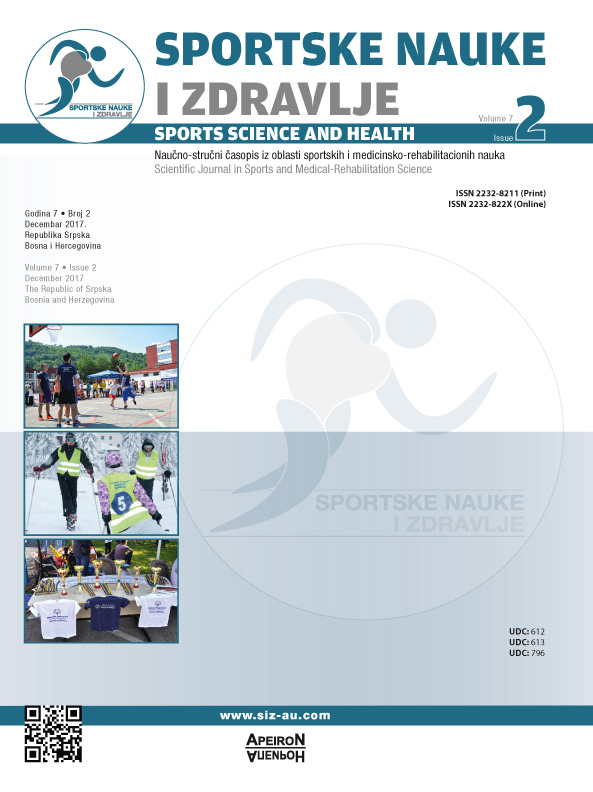Differences in Anthropometrics Characteristics, Somatotype and Motor Skill in Karate and Non-Athletes // Razlike u antropometrijskim karakteristikama, somatotipu i motoričkim sposobnostima karatista i nesportista
DOI:
https://doi.org/10.7251/SSH1702108BAbstract
Anthropometric characteristics aim to improve the performance in many sports. Morphological status of top athletes is relatively homogeneous, depending on the sport, and can be defined as a pattern for the achievements of athletes (Misigoj-Duraković, Matković, &Medved, 1995). Somatotype reflects the overall appearance of the human body and gives meaning to the total morphological status of the human body (Ross, Ward, Leahy, & Day 1982). Our research was conducted with the main objective to identify the differences in anthropometric characteristics somatotype and some basic motor skills in karate and non-athletes. The research was conducted on 100 male subjects 17-18 years, karate (50) and non-athletes (50). The purpose of this study is to define the differences in anthropometric characteristics, somatotypes and basic motor skills in karate and non-athletes. The pattern of the anthropometric measures is defined by ISAK (International Society for the Advancement of Kinanthropmetry), except the variables: body mass index (BMI), body fat percentage (BF %) and lean body mass (ALBM), which are calculated according to the methodology During Womerslay, while the variable (HWR) derives from the software program somatotype 1.2, the pattern of motor skill is defined by battery of Eurofit testing. For determining the differences between the two groups of respondents, a t-test for independent samples is applied, while the evaluation of the somatotypes was done according to the methodology by Heath-Carter with 10 anthropometric measurements. Based on the obtained results of measurements from both groups respondents, was proved that there are no statistically significant differences in anthropometric measures. Based on our study, while in karate we found balanced mesomorph somatotype 3.07-4.28-2.85 in non-athletes we find endomorphic mesomorph somatotype 3.47-4.96-2.67. Statistically significant differences on the components of somatotypes exist at mesomorph component. Differences in the motor skill were found in favor of karate athletes.Downloads
Published
2018-01-10
Issue
Section
Чланци
